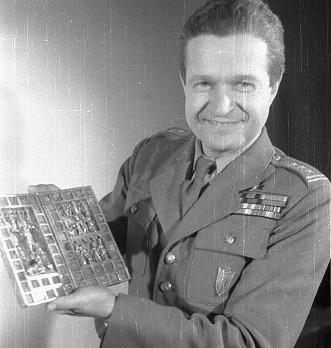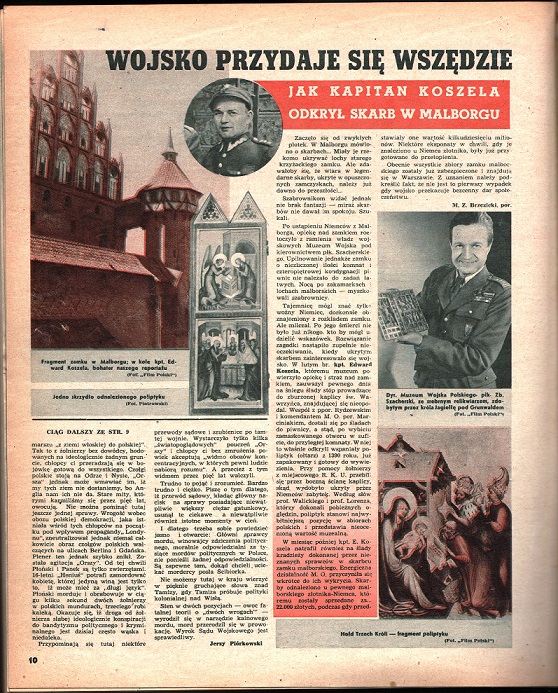Colonel, director of the Polish Army Museum in Warsaw. He was educated at a gymnasium in Warsaw, he also began studies at the Faculty of Law of the University of Warsaw. Volunteer for the Squadron of the Masovian Region and participant in the Polish-Bolshevik war. He began his military career with a course at the Central Cavalry School in Grudziądz, completed with the rank of cadet. He participated, inter alia, in the battle of Bzura, Zbrożkowa Wola; he commanded the 7th Horse Rifle Regiment in the battles for Sieraków, near Truskaw, etc. From September 19thuntil March 1940 he stayed in a hospital in Warsaw recovering from being seriously wounded. Dedicated to the service, he was actively involved in military affairs, for which he was promoted many times. After the liberation of Warsaw, he was nominated the director of the Military Museum. One of the most important tasks at that time, apart from the renovation of the ruined museum building, was to undertake efforts to determine the fate of the scattered museum collections. During one of his exploratory journeys, he became interested in the castle in Malbork. In August 1945, Branch No. 1 of the Military Museum was established in the castle. Due to the fact that the condition of the castle was very bad, the collections left in it, incl. weapons, sacred art, furniture and books were brought to Warsaw and partly distributed in the Military Museum, the National Museum and the capital’s libraries. In January 1947, the most valuable sacred objects discovered in Malbork were officially handed over to the National Museum, incl. the Polyptych from Grudziądz, diptych of commaner Dagister Thiele von Lorich or a gothic chalice.
(by A. Siuciak)

Il. za: Przywracanie historii. Losy malborskich zbiorów po II wojnie światowej, red. A. Siuciak, Malbork 2015, s. 233.

MZ. Brzezicki, Wojsko przydaje się wszędzie. Jak kapitan Koszela odkrył skarb w Malborku, Żołnierz Polski, 1946, nr 43 (59), s. 3 [z dn. 22-28.XI.].
